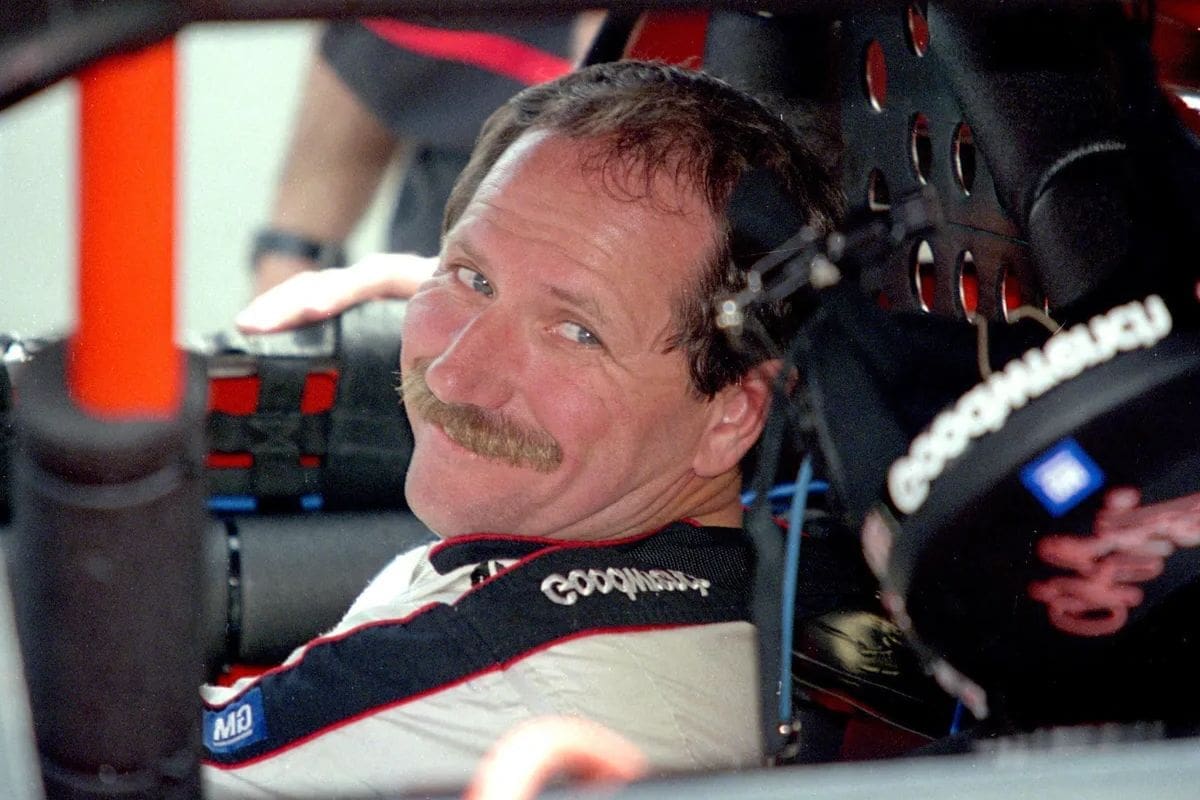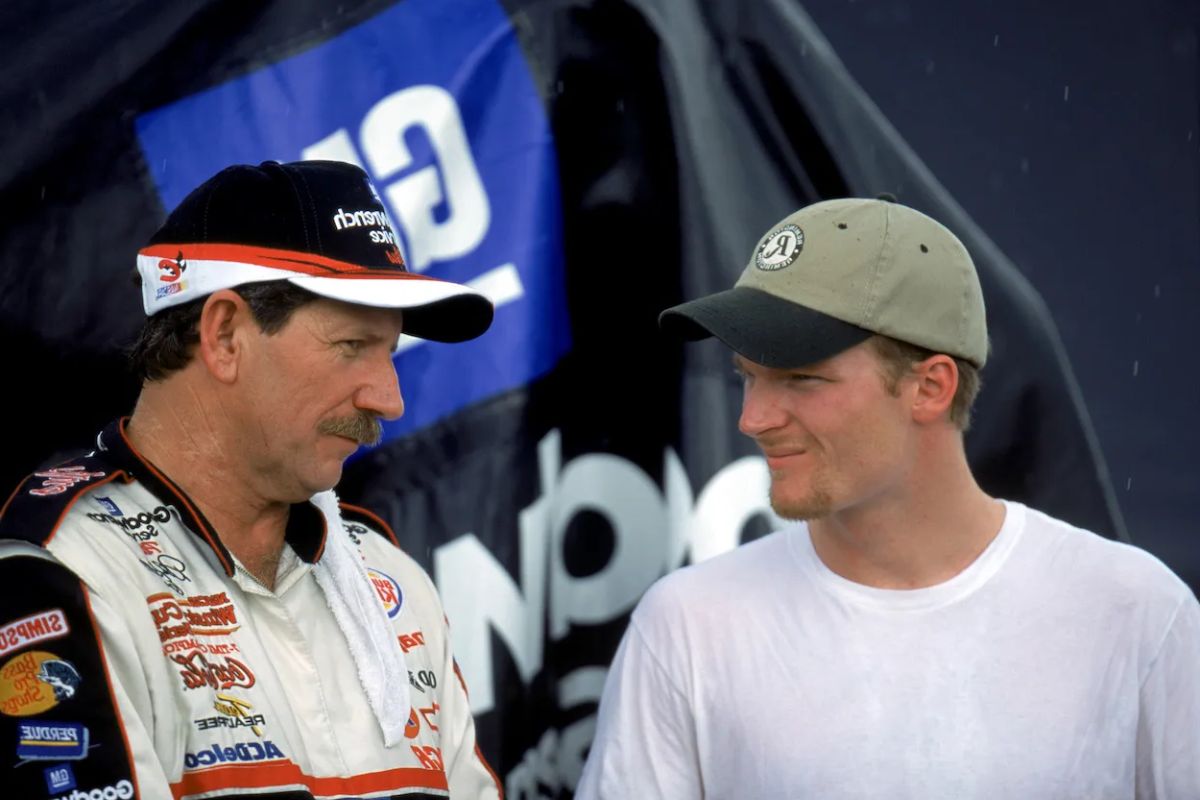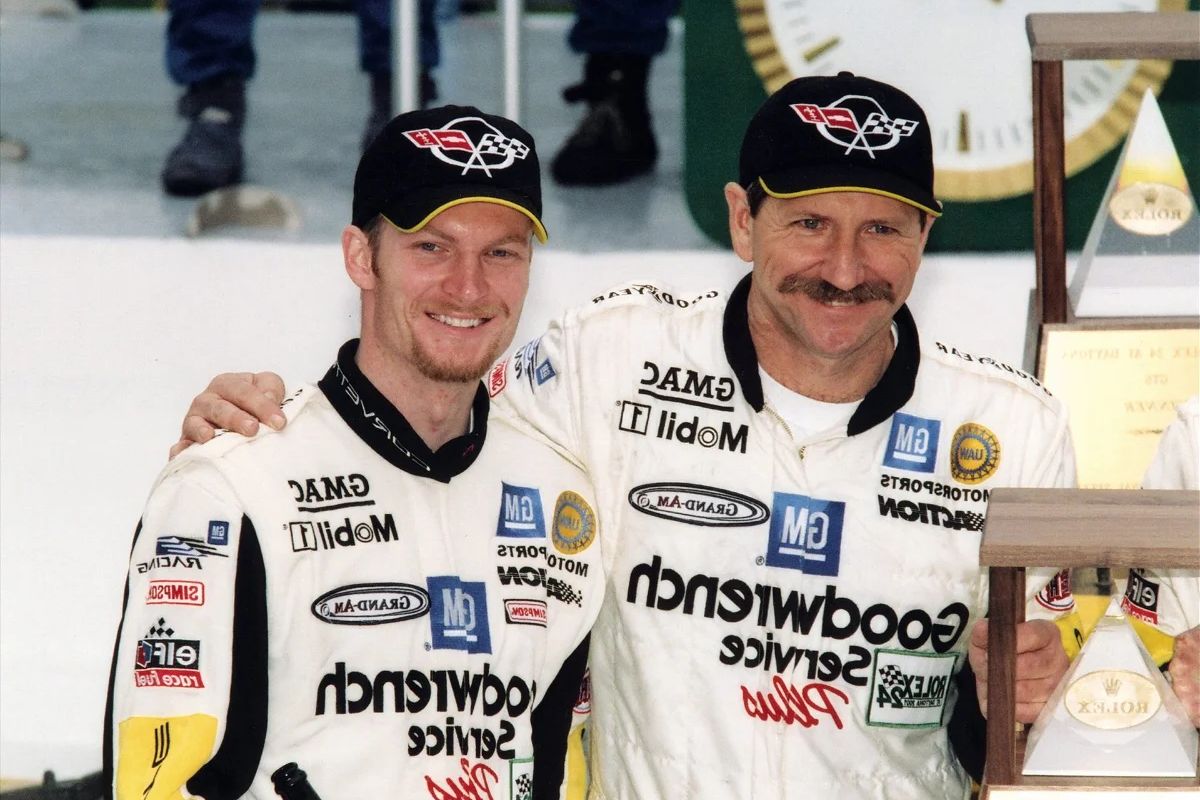Dale Earnhardt Sr. Ironhead: Dale Earnhardt Sr., a legendary figure in the world of NASCAR, was known for his unwavering determination and unyielding spirit on the racetrack. Among his many remarkable qualities, one that stood out was his nickname, ‘Ironhead’.
This moniker not only represented his physical toughness, but also served as a symbol of his endurance in the face of adversity. In this discussion, we will delve into the origins of this nickname, explore the incident in 1976 that showcased Earnhardt’s resilience, examine his enduring legacy amidst enduring pain, and draw a contrast between his attitude and that of Denny Hamlin.
As we go deeper into the world of Dale Earnhardt Sr., we will uncover the true essence of ‘Ironhead’, a symbol of unwavering endurance that continues to inspire generations of racing enthusiasts.
Key Takeaways
- ‘Ironhead’ nickname represented Dale Earnhardt Sr.’s endurance and determination.
- Earnhardt’s resilience and ability to persevere in the face of adversity left an inspiring impact on fans and fellow racers.
- Despite enduring pain, Earnhardt achieved remarkable success with 76 Cup victories and seven championships, becoming a symbol of his era in NASCAR.
- Contrasting attitudes towards pain and medical concerns between Earnhardt and Denny Hamlin reflect shifting cultural norms and advancements in medical technology in NASCAR.
Unveiling Dale Earnhardt Sr.’s “Ironhead” Nickname
The origins and significance of NASCAR legend Dale Earnhardt Sr.’s lesser-known nickname, ‘Ironhead,’ are unveiled in this paper, shedding light on its deeply grounded significance.
While Earnhardt is widely known as ‘The Intimidator,’ the story behind ‘Ironhead’ reveals a different aspect of his persona. The nickname originated from his tough and resilient nature, both on and off the racetrack. Earnhardt was known for his ability to withstand physical pain and persevere through challenging circumstances.
‘Ironhead’ became a symbol of his endurance and determination, representing his unwavering commitment to succeed in the face of adversity. The nickname resonated with fans and fellow racers alike, emphasizing Earnhardt’s reputation as a fierce competitor who never backed down.
Ultimately, ‘Ironhead’ encapsulated the indomitable spirit that made Dale Earnhardt Sr. a true legend in the world of NASCAR.

The 1976 Incident and Earnhardt’s Resilience
As the layers of Dale Earnhardt Sr.’s persona continue to unfold, a pivotal moment in his life emerged from the 1976 incident, showcasing his unwavering resilience and unmatched toughness.
Despite sustaining a severe injury that left a piece of metal shrapnel near his left temple, Earnhardt made an astonishing choice to leave it in place for approximately 25 years. This decision speaks volumes about his determination and perseverance, serving as a testament to his indomitable spirit.
Earnhardt’s resilience in the face of adversity is truly remarkable and inspiring, leaving a lasting impact on those who witnessed his journey. His ability to endure physical and mental challenges embodies the true essence of a champion.
Earnhardt’s remarkable story continues to captivate and inspire fans around the world, reminding us all of the power of resilience.

Earnhardt’s Legacy Amidst Enduring Pain
Amidst the enduring pain he faced throughout his career, Dale Earnhardt Sr.’s legacy stands as a testament to his unmatched determination and unwavering spirit.
Despite the presence of the metal piece in his body, Earnhardt achieved remarkable success in NASCAR, leaving an indelible mark on the sport. From 1976 to 2001, he clinched an impressive 76 Cup victories and secured seven championships. His resilience became symbolic of his era within NASCAR, inspiring countless fans and fellow drivers.
Earnhardt’s ability to push through the pain and continue competing at the highest level demonstrated his unwavering dedication to the sport he loved. His legacy serves as a reminder that true greatness often requires enduring pain and overcoming obstacles, leaving an enduring impact that transcends the physical.
Contrasting Attitudes: Earnhardt and Denny Hamlin
In contrasting approaches, Dale Earnhardt Sr. and Denny Hamlin exhibit differing attitudes towards addressing medical concerns within the context of their NASCAR careers.
While Earnhardt’s legacy was built upon his ability to endure pain, Hamlin represents the evolving mindset in the sport. The following bullet points highlight the differences in their attitudes:
- Earnhardt’s enduring attitude: Known as ‘Ironhead,’ Earnhardt continued to race despite suffering from numerous injuries, demonstrating a stoic approach to pain.
- Hamlin’s proactive approach: In 2014, Hamlin quickly addressed a metal piece concern, highlighting the modern emphasis on prioritizing safety and taking immediate action.
- Changing cultural norms: Hamlin’s response reflects a shift in NASCAR’s attitude towards medical concerns, with a greater emphasis on proactive measures and prioritizing driver well-being.
- Advancements in medical technology: The availability of better diagnostic tools and treatment options has likely contributed to the change in attitudes towards addressing medical concerns.
- Impact on driver longevity: Hamlin’s proactive approach may enhance his career longevity, as prioritizing health and safety can help prevent long-term damage and promote overall well-being.
These differing attitudes demonstrate how the NASCAR community has evolved in its approach to medical concerns, balancing the endurance mentality of the past with a more proactive focus on driver safety and well-being.

Earnhardt Sr.’s Enduring Legacy of Resilience
Dale Earnhardt Sr.’s enduring legacy of resilience continues to inspire admiration and reverence within the NASCAR community. His unwavering determination and toughness on the racetrack made him a symbol of endurance in the sport. Earnhardt Sr.’s ability to overcome setbacks and push through challenges showcased his indomitable spirit, earning him the nickname ‘Ironhead’.
His legacy extends beyond his racing achievements, serving as a reminder of the importance of perseverance and stoicism in the face of adversity. The story of ‘Ironhead’ not only highlights Earnhardt Sr.’s remarkable toughness but also resonates with fans and fellow racers, reminding them of the enduring qualities required to succeed in NASCAR.
Earnhardt Sr.’s legacy of resilience continues to inspire and motivate, leaving an indelible mark on the sport he loved.
Conclusion of Dale Earnhardt Sr. Ironhead
Dale Earnhardt Sr.’s ‘Ironhead’ nickname serves as a symbol of his enduring resilience. Despite facing the 1976 incident and enduring pain, Earnhardt left a lasting legacy as a resilient figure in the world of racing.
His ability to persevere and overcome challenges contrasts sharply with the attitude of Denny Hamlin. Earnhardt’s legacy of resilience continues to inspire and remind us of the importance of determination in the face of adversity.
ALSO READ: Dale Earnhardt Daytona Redemption: Triumph and Turmoil in the Pursuit of Victory
Our Reader’s Queries
What did Schrader see in Dale’s car?
While other racers were unaware of Dale Earnhardt’s passing until after the Daytona 500 accident, Ken Schrader immediately recognized the severity of the situation. Upon inspecting the damaged No. 3 car, Schrader saw that Earnhardt had tragically lost his life.
What kind of car did Dale Earnhardt SR drive?
Dale Earnhardt, the legendary race car driver, had a fleet of cars that he drove throughout his career. While he is most famously associated with his black No. 3 Chevy, which earned him the nickname “The Man in Black,” he also drove other vehicles.
Did Dale Earnhardt senior have a brother?
In 1967, the younger Earnhardt left high school to pursue his passion for racing. He made his NASCAR Winston Cup debut at the World 600 in Charlotte, North Carolina in 1975.

